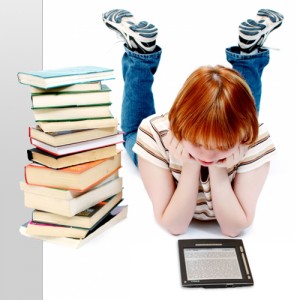 Our friends at The Passive Voice linked to another of those tedious ‘smell of paper’ screeds the other day. You know the kind of article I mean: she bought a Kindle (for work! It’s totally defensible!) but got seduced but the feature set and the convenience aspect, and the free public domain books and the one-clickiness of it all, and now she feels guilty. She is single-handedly killing the bookstores of the world, her ability to focus has gone out the window, her cat doesn’t love her anymore and so on…
Our friends at The Passive Voice linked to another of those tedious ‘smell of paper’ screeds the other day. You know the kind of article I mean: she bought a Kindle (for work! It’s totally defensible!) but got seduced but the feature set and the convenience aspect, and the free public domain books and the one-clickiness of it all, and now she feels guilty. She is single-handedly killing the bookstores of the world, her ability to focus has gone out the window, her cat doesn’t love her anymore and so on…
And I got annoyed. And then I got bemused that yet another allegedly well-educated person has totally missed the point here. I have said it before, and I will say it again: this is not a zero-sum game. It’s not one OR the other. Amazon is not evil or not evil. It’s all about how you use it, when you use it, and what else you use to go along with it.
It’s the same with any product category. Ice cream isn’t evil. Ice cream for every meal, every day, all the time is. Expensive artisan bread can be a nice treat, but most people go for the plain old grocery store bread most of the time because it;s cheaper and they save the artisanal stuff for a special treat. They are not evil, terrible people for buying Wonder Bread. They are not destroying all the indie bakeries of the world…
To bring the analogy back to books a little, I am taking a course right now on the teaching of reading to children, and one of the big buzzwords in the course content so far has been ‘balanced literacy.’ They liken learning how to read to any other skill—learning how to swim, for instance. Swimming is a skill in and of itself (like reading) but it also has more refined component skills (like reading). You have to practice these skills individually, but mastering them only as discrete little tasks does not make you a swimmer. You might be able to kick and move your arms, but until you practice doing it as a whole, you’ll sink.
The theory, therefore, is that children need a multi-pronged literacy program which encompasses many things—read-alouds, to let them just enjoy the story and be exposed to content above their level; guided reading, to give them some support while they practice the skill of reading as a whole; and work on the discrete skills such as letter and sound recognition, phonics and sight word mastery. A program which encompasses all these methods is called a balanced literacy program.
I would like to suggest that a similar frame of reference might be helpful to those who are hand-wringing about the evilness of Amazon and the smell of paper. Choose the Wonder Bread (easy Amazon one-click) some, or much of the time. Choose the artisanal bread (beautiful books which really merit the special treatment) for those titles which are truly special. Be a bibliophile with a balanced collection which truly gives you pleasure and joy.
Let me give you an example of how this looks in my life.
1) I get all of my personal reading—novels, popular fiction, that sort of thing—on eBook. I go through too many of them to be able to store them all in paper, and I don’t enjoy buying them and then having to cull them and sell them back to the used bookstore to make room. If I want to own it, I want to keep it, and eBooks let me do it. It’s a convenience issue.
2) On the other hand, I do prefer paper for kids books, at least until they hit the chapter book stage. And I will buy those from the small shops—even if it costs more than ordering them online from Amazon—because part of the fun for me is taking the small child with me and letting him help me pick. That experience is worth the premium I pay for the instant gratification of being in the store. We are slowly building up our library of quality kids picture books, and I will enjoy making the shelf space for those books, having them displayed and used.
3) Some of my professional books are also in paper, although for those I will comparison-shop or buy secondhand for the best price. Many of these have pages which are reproducible for use with students. Others are reference books with charts, tables and so on which either look terrible in e-form, or are not available that way. I have a shelf for those, and I use them and refer to them often. I also prefer paper for cookbooks, since I like to see the whole recipe at once, so I have a shelf for that—although again, I will comparison shop for those if there is a certain book I’m looking for.
3) I also have a small collection of vintage books with a personal history, which I have kept and which I display. These include some books I inherited from my grandparents (one of them is a reference book and even has annotations in my grandmother’s own handwriting!) and also books I loved which have not yet made the shift to eBook.
4) The Beloved buys—in paper—the annual guide for his favourite baseball team every year, at the opening game of the season. He has a shelf of these dating back to the 1980s and will never part with them. I have yet to crack a spine on these myself, but I know he has read them all from cover to cover, and this is his special shelf of favourite books.
So, if you are counting, that’s at least five shelves full of paper (kids books, baseball, reference, cookbooks, beloved favourites) from at least five different sources (online orders, secondhand market, local bricks and mortar, specialty vendors such as the baseball people and the university bookstore, and gift/inherited). And that’s in a house with over 1000 eBooks too! I imagine there are other homes where the ratio would weight even more heavily to the paper, but still include the eBook option.
It’s Balanced Bibliophilocy—paper, when paper matters, eBooks when convenience matters. Online buying, when price matters and there is no time deadline, in-person buying when you are looking for a special experience or when instant gratification is at play. Doesn’t that sound like a much better paradigm here?



















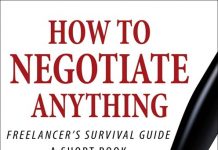
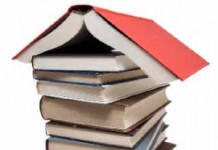
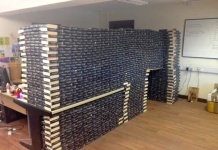
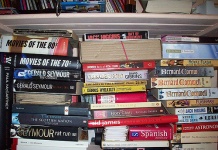










Let me sum it up.
She [Lucy Mangan] is wrong. So what?
Let her read her leather-bound hardback. In the meanwhile we – the e-book enthusiasts – read book after book after book on our readers.
http://xkcd.com/386/
You deal with the dead trees versus e-book situation similarly to how I do. The big difference is the amount of shelf space already filled with books and the stacks and stacks of dead tree books around my house.
I appreciate paper. I do however reserve that appreciation for fine books. Well printed on fine paper and usually hard bound. The trade paperback? Only because I either can’t get it as an e-book or got it years ago before switching to e-books.
Even physical books are different sizes and shapes and come in different qualities of bindings. Many criticize e-books because an e-reader or tablet cannot replace all forms of hard copy books. I use my e-book reader and tablet for those books they are good for and revert to hard copy for other things.
E-book readers and tablets are just another in the long line of forms for delivering content to readers. I for one am glad that we’ve moved beyond stone or clay tablets.